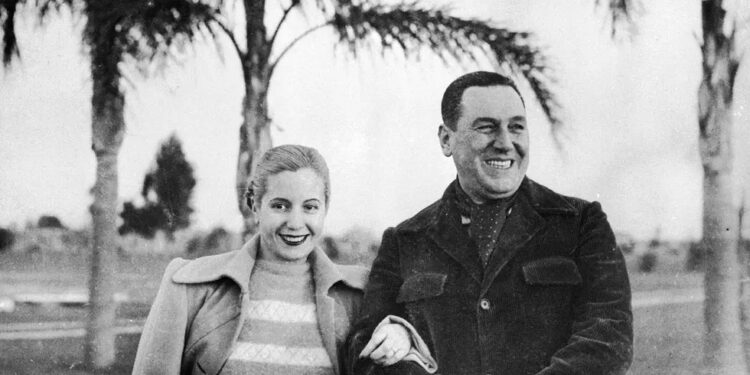Juan Domingo Perón’s rise to the presidency of Argentina in 1946 marked a pivotal moment in the nation’s history, ushering in an era of populist politics and social reform that would deeply influence Argentine society for decades to come.
Prior to his presidential bid, Perón had served as Secretary of Labor and Social Welfare and Vice President under the military government that took power in 1943. In these roles, he built a strong base of support among workers by implementing labour reforms, introducing social security benefits, and establishing close relationships with trade unions. His charismatic personality and advocacy for the working class earned him the loyalty of Argentina’s descamisados (“shirtless ones”), as the urban poor were known.
The 1946 election came at a time of significant social and economic change in Argentina. World War II had enriched the country through agricultural exports, but there was growing tension between traditional oligarchic interests and an emerging working class demanding greater rights and representation. Perón positioned himself as a champion of social justice and industrial development, promising to transform Argentina into a more equitable society.
His campaign received crucial support from his wife Eva Duarte (later Eva Perón), whose own charisma and connection with the masses helped mobilize female voters, despite women not yet having the right to vote. The Catholic Church initially backed Perón, viewing him as a bulwark against communism.
Perón faced opposition from traditional conservative forces, who viewed his populist policies with alarm, and from the United States, which had concerns about his nationalist economic policies and his government’s sympathies toward former Axis powers. His opponents united behind José Tamborini of the Democratic Union coalition.
In the February 24, 1946 election, Perón won with 52.4% of the vote, defeating Tamborini in what was considered a fair and democratic process. His victory represented the first time in Argentine history that a candidate representing working-class interests had won the presidency through popular vote.
Upon taking office, Perón began implementing his “Third Position” ideology, which sought a middle path between capitalism and communism. His presidency would be characterized by nationalist economic policies, industrial development, wealth redistribution, and the incorporation of previously marginalized sectors of society into the political process.
The 1946 election marked the beginning of the Peronist movement, which would become Argentina’s most significant political force of the 20th century, continuing to influence the country’s politics well into the 21st century.
newshub



Recent Comments